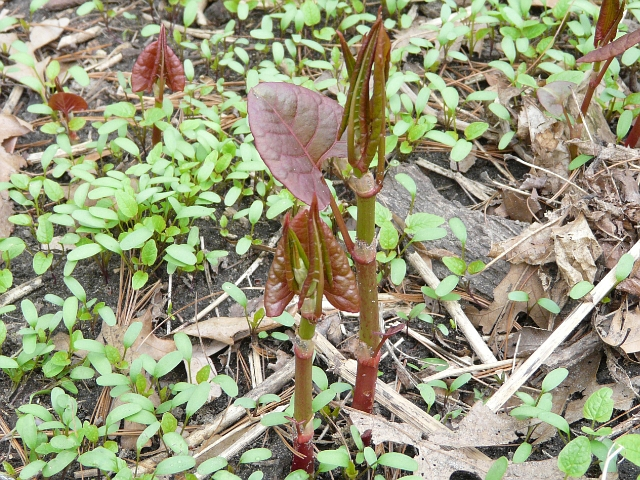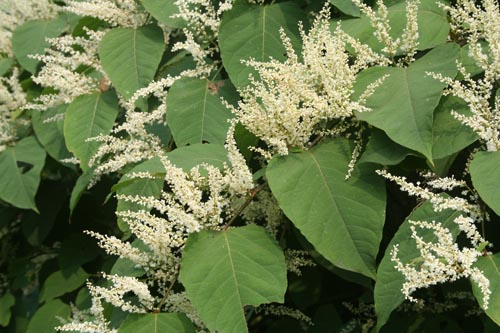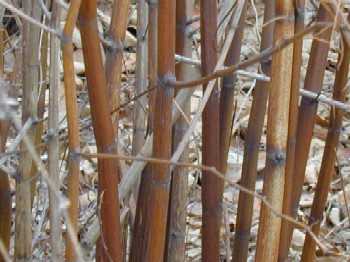Japanese Knotweed
Japanese Knotweed is probably the most invasive plant in Britain. Japanese Knotweed was introduced to the UK in 1825 and widely planted as an exotic garden ornamental before the invasive nature of the plant became clear.
It falls under the 1981 Wildlife and Countryside Act which effectively means that it is an offence to plant or cause it to grow in the wild. In addition to this, Japanese Knotweed is classified as ‘controlled waste’ under the Environment Protection Act (1990) and must be disposed of at a licensed landfill site in accordance with the Environment Protection Act (Duty of Care) Regulations 1991.
Characteristics
Red, fleshy shoots appear in early spring from an extensive underground network of rhizomes (stems). The rhizomes from one plant can be at least 2 metres deep and 7 metres across. By May, the shoots can reach 1.5metres and up to 3 metres by June. In late summer, long racemes of cream flowers appear. These will dieback after the first frost of the autumn, leaving the leafless stems to remain throughout the winter. Generally in the UK, the plant does not produce viable seed, only in rare circumstances.
Identification
Spring - Main Characteristics
- Reddish green fleshy shoot develop from ground level

Summer - Main Characteristics
- Japanese knotweed can reach heights of up to 3 metres and is green in colour with red/purple specks.
- The stem is hollow with dark nodes, similar in appearance to bamboo and the leaves are heart shaped.
- The plant forms a dense clump.

Autumn and Winter - Main Characteristics
- After the first frost arrives, the leaves drop.
- The plant dies back but the stem remains upright, gradually turning from green to brown hollow stalks.

Treat Japanese Knotweed with: